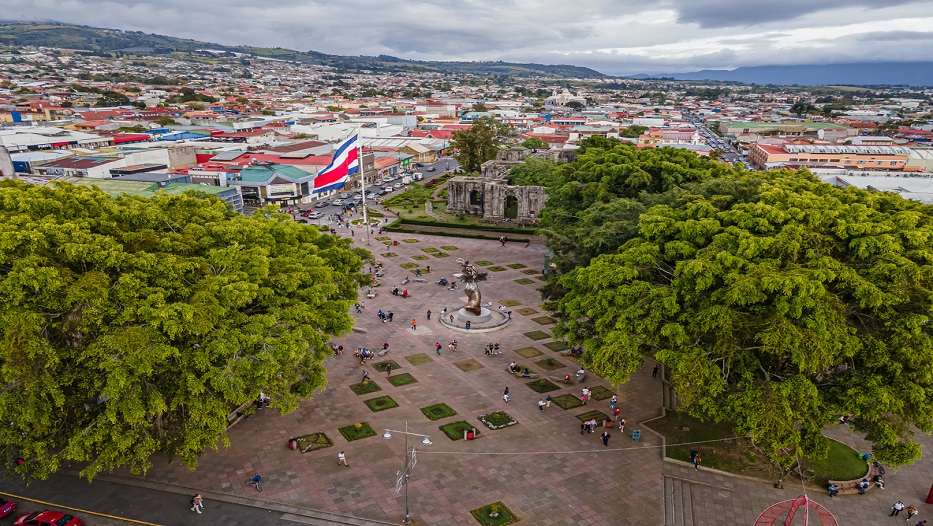Cristina Leon Vera | 19/09/2023
Costa Rica has experienced sustained economic growth in recent decades, driven by its political and social stability, its opening to international trade and an established commitment to training, capacity-building and innovation.
The region currently enjoys macroeconomic stability with good forecasts, as its GDP is expected to grow by 2.8% in 2023 and inflation is stabilizing within the target range set by local authorities (between 2% and 4%), according to the Organization for Economic Cooperation and Development (OECD) semi-annual Economic Outlook report.
Strengths of the Costa Rican Economy
As the analysis recently published by ICEX indicates, Costa Rica stands out due to its diversified economy, where services, agriculture and manufacturing play key roles. The services sector is a leading player, contributing more than 70% to GDP, with a special emphasis on financial services, tourism and technology.
Agriculture, in particular iconic products such as bananas, pineapples and coffee, is an essential pillar, accounting for about 30% of exports and employing about 11.7% of the population. In addition, the region embraces sustainability and agricultural diversification, including organic and dairy products.
However, while the manufacturing sector—focused primarily on medical and electronic devices—is showing steady growth, it still has development potential compared to other areas since energy and transportation infrastructure needs to be improved to further drive progress.
In addition, tourism, valued for its rich biodiversity and natural splendor, plays a crucial role by contributing 8% to Costa Rican GDP. Despite having advanced road and telecommunications infrastructure, significant challenges in the energy and transportation arena remain, particularly in rural areas.
Foreign Investment and Growth Strategies
Costa Rica has attracted considerable flows of direct foreign investment in recent years, thanks to its political and economic stability, a highly trained workforce and its strategic location in Central America.
The year 2020 was especially relevant, when foreign direct investment in the country reached $1.5 billion, especially focusing on sectors such as technology, manufacturing and financial services thanks to incentives from the Costa Rican government such as tax exemptions and training programs for the workforce.
In addition, the government has implemented investment-friendly policies, such as the creation of free trade zones, which offer tax and customs benefits to the companies established there. An essential engine in the Costa Rican economy has emerged in these zones, especially in the manufacturing sector.
As for Spanish investment in Costa Rica, it is one of the main investors in the country, exerting significant influence in sectors such as tourism, energy and infrastructure. In 2020 alone, this investment reached $200 million, representing about 13% of total direct foreign investment in the country.
International Trade and Challenges
The country’s economy depends heavily on exports, led by agricultural, electronic and medical products, with destination countries such as the United States, which remains the main importer at 38%, while China and Mexico contribute 8% and 7% respectively. These three countries together account for more than half of Costa Rica’s total exports, demonstrating the importance of these markets to the country’s economy.
Imports of manufacturing, machinery and equipment account for about 60% of the country’s GDP, with oil, chemical and machinery products standing out. Regarding the countries of origin of these imports, the United States again leads the way with 28%, followed by China and Mexico on 17% and 7% respectively. These three countries account for more than half of the total imports.
Costa Rica is seeking to strengthen its trade through agreements, focusing on innovation and education. Despite the challenges in infrastructure and competitiveness, it is moving forward with initiatives such as the new free trade zone law aimed at foreign investment and employment.
Looking to the future in a global context
Despite the economic challenges faced in recent years, Costa Rica has managed to maintain a situation of macroeconomic stability thanks to the diversification of its economy and its opening to international trade. However, the COVID-19 pandemic has left a notable impact on the economy, especially the tourism sector.
In response to these challenges, the country has implemented policies to promote foreign investment and diversify its economy, enhancing sectors such as technology, manufacturing and financial services.
In terms of future prospects, Costa Rica is expected to continue to be an attractive destination for foreign investment in coming years, thanks to its political and economic stability, as well as its strategic location in Central America.
However, Costa Rica also faces challenges in terms of infrastructure and competitiveness, especially compared to other countries in the region. Therefore, it is imperative that the country continues to work on improving its energy and transport infrastructures.





